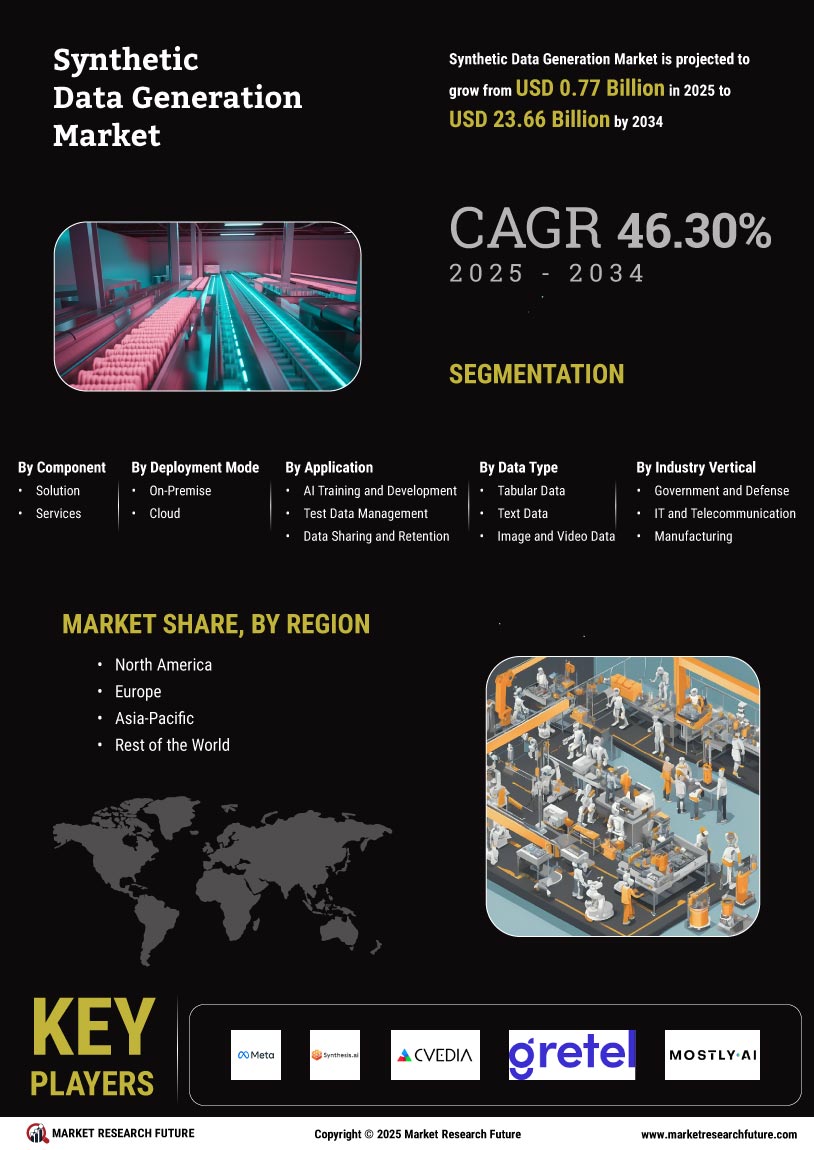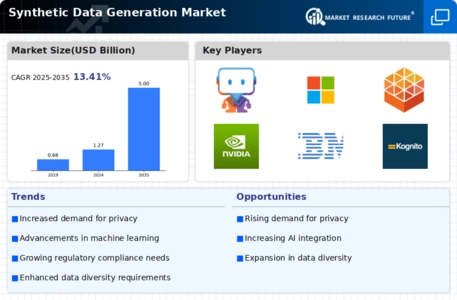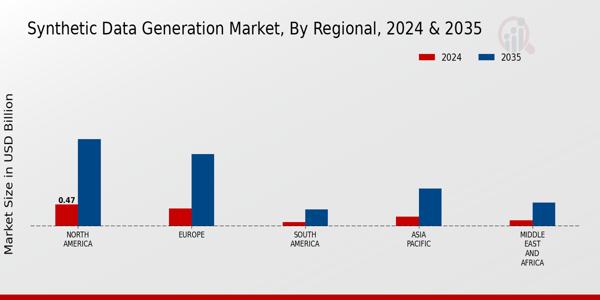Market Growth Projections
Rising Demand for Data Privacy
The increasing emphasis on data privacy regulations globally drives the Global Synthetic Data Generation Market Industry. As organizations strive to comply with stringent regulations such as GDPR and CCPA, the need for synthetic data that preserves privacy while enabling data analysis becomes paramount. This trend is particularly evident in sectors like finance and healthcare, where sensitive information is prevalent. By utilizing synthetic data, companies can mitigate risks associated with data breaches while still gaining valuable insights. The market is projected to reach 1.27 USD Billion in 2024, reflecting the growing recognition of synthetic data as a viable solution for privacy concerns.
Advancements in Machine Learning
Technological advancements in machine learning and artificial intelligence significantly propel the Global Synthetic Data Generation Market Industry. As algorithms become more sophisticated, the ability to generate high-quality synthetic data that accurately mimics real-world scenarios improves. This is particularly beneficial in training machine learning models, where access to diverse and representative datasets is crucial. Industries such as autonomous vehicles and robotics are increasingly leveraging synthetic data to enhance model performance and reduce reliance on costly real-world data collection. The anticipated growth of the market to 5 USD Billion by 2035 underscores the potential of these advancements in shaping the future of data generation.
Enhanced Data Quality and Diversity
The ability of synthetic data to enhance data quality and diversity is a crucial factor driving the Global Synthetic Data Generation Market Industry. Real-world datasets often suffer from biases and limitations, which can adversely affect the performance of machine learning models. Synthetic data generation allows for the creation of balanced datasets that encompass a wider range of scenarios and characteristics. This is particularly important in fields like healthcare, where diverse patient representations are essential for accurate model training. As organizations strive for improved model performance and fairness, the demand for high-quality synthetic data is likely to increase, contributing to the market's anticipated growth.
Cost-Effectiveness of Synthetic Data
The cost-effectiveness of synthetic data generation presents a compelling driver for the Global Synthetic Data Generation Market Industry. Traditional data collection methods can be resource-intensive and time-consuming, often requiring significant financial investment. In contrast, synthetic data can be generated quickly and at a fraction of the cost, making it an attractive alternative for businesses looking to optimize their data strategies. This is particularly relevant for startups and small enterprises that may lack the resources for extensive data collection. As organizations increasingly recognize the economic advantages of synthetic data, the market is expected to grow at a CAGR of 13.27% from 2025 to 2035.
Growing Applications Across Industries
The expanding applications of synthetic data across various industries serve as a vital driver for the Global Synthetic Data Generation Market Industry. Sectors such as finance, healthcare, and automotive are increasingly adopting synthetic data for diverse purposes, including risk assessment, patient data simulation, and autonomous vehicle training. For instance, financial institutions utilize synthetic data to model risk scenarios without exposing real customer data. This versatility enhances the appeal of synthetic data, as it can be tailored to meet specific industry needs. The projected growth of the market to 1.27 USD Billion in 2024 highlights the increasing recognition of synthetic data's utility across sectors.



















